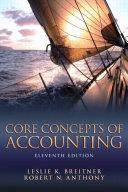Question
1. Your audit of Think Positive Company disclosed that your client kept very limited records. Purchases of merchandise were paid for by check but most
1. Your audit of Think Positive Company disclosed that your client kept very limited records. Purchases of merchandise were paid for by check but most other items were out of cash receipts. The company's collections were deposited weekly. No record was kept of cash in the bank nor was a record kept of sales. Accounts receivable were recorded only by keeping a copy of the ticket and this copy was given to the customer when he paid his account.
Additional information:
a. On January 2, 2020, Think Positive Company started business and issued share capital 72,000 shares with 100 par for the following considerations:
Cash600,000
Building (useful life of 15 years) 5,400,000
Land1,800,000
7,800,000
b. An analysis of the bank statements showed total deposits including the original cash investment of 4,200,000. The balance in the bank statement on December 31, 2020, was 300,000 but there were checks amounting to 60,000 dated in December but not paid by the bank until January 2021. Cash on hand during December 31, 2020, was 150,000 including customers' deposits of 90,000.
c. During the year, Think Positive Company borrowed 600,000 from the bank and repaid 150,000 and 30,000 interest.
d. Disbursements paid in cash during the year were as follows:
Utilities120,000
Salaries120,000
Supplies240,000
Dividends180,000
e. An inventory of merchandise taken on December 31, 2020, showed 906,000.
f. Tickets for accounts receivable totaled 1,080,000 but 60,000 of that amount may prove uncollectible.
g. Unpaid suppliers invoices for merchandise amounted to 420,000.
h. Equipment with a cash price of 480,000 was purchased in early January on a one-year installment basis. During the year, checks for the down payment and all maturing installments totalled 534,000. The equipment has a useful life of 5 years.
Based on the above and the result of your audit, determine the following: (disregard income taxes)
I. Payments for merchandise purchases in 2020
a. 2,586,000c. 2,646,000
b. 2,436,000d. 3,246,000
II. Collections from sales in 2020
a. 3,720,000c. 3,000,000
b. 4,320,000d. 4,920,000
III. Net income for the year ended December 31, 2020
a. 1,770,000c. 1,560,000
b. 1,620,000d. 960,000
IV. Shareholders' equity as of December 31, 2020
a. 9,390,000c. 9,180,000
b. 9,240,000d. 8,580,000
V. Total assets as of December 31, 2020
a. 9,583,200c. 9,390,000
b. 9,540,000d. 9,450,000
2. On January 1, 2020, True and Orange formed a partnership by controlling cash of 360,000 and 240,000, respectively. On February 1, 2020, partner True contributed an additional 120,000 cash to the partnership and on August 1, 2020, partner True has a permanent withdrawal of 60,000. On May 1, 2020, partner Orange contributed machinery with a fair value of 80,000 and a net book value of 60,000 when contributed. On November 1, 2020, partner Orange contributed an additional 40,000 cash to the partnership. Both partners withdrew half of their salary allowances in 2020.
The partnership agreement of True and Orange has the following terms for the division of net income (loss) to the partners:
a. Interest of 12% is allowed on the average capital balance
b. Salaries of 8,000 per month to each partner
c. Bonus of 10% of net income after bonus to True
d. Balance to be divided in the ratio of 6:4 to True and Orange, respectively
Required: Compute for income allocation for each partner under the following assumptions:
I. Net Income of 229,500
II. Net Loss of 300,000
Step by Step Solution
There are 3 Steps involved in it
Step: 1

Get Instant Access to Expert-Tailored Solutions
See step-by-step solutions with expert insights and AI powered tools for academic success
Step: 2

Step: 3

Ace Your Homework with AI
Get the answers you need in no time with our AI-driven, step-by-step assistance
Get Started


